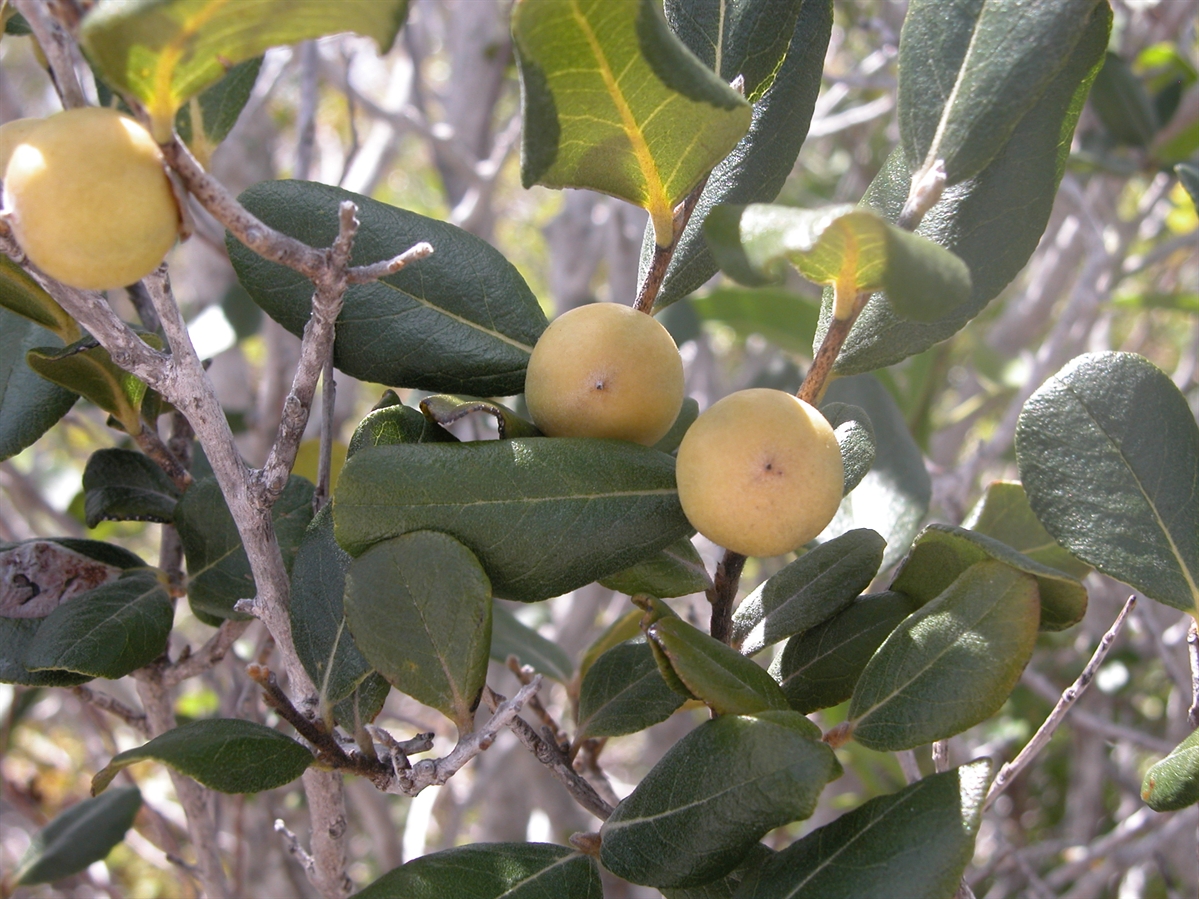Habit: Diospyros crassinervis grows as a shrub to small tree to 8 meters in height (typically smaller). The leaves are arranged alternately, ovate, to 8 cm long, with a rounded apex and entire margin. The leaves are very chartaceous, dark green adaxially and light green to yellow abaxially.
The actinomorphic, dioecious, flowers emerge in groups (staminate) or solitarily (carpellate) from the axils of leaves on separate plants. The calyx has 3 fused hairy sepals forming a short tube. The corolla has 3 fused glabrous petals forming a tube. In staminate flowers there are 9 stamens and no ovary. In carpellate flowers there are 3 staminodes and a superior ovary. The ovary has 6 locules. The fruit is a yellow berry that turns black with age.
Habitat: Diospyros crassinervis grows in Dry Broadleaf Evergreen Formation – Forests and Shrublands (coppice/scrublands).
Distribution: Diospyros crassinervis occurs in the central and northern island groupings within the Lucayan Archipelago as well as Cuba and Hispaniola.
Medicinal/Cultural/Economic usage: Diospyros crassinervis is used in the Lucayan Archipelago for strengthening (male virility) teas. Additionally it is used for gastrointestinal issues (to induce vomiting).

